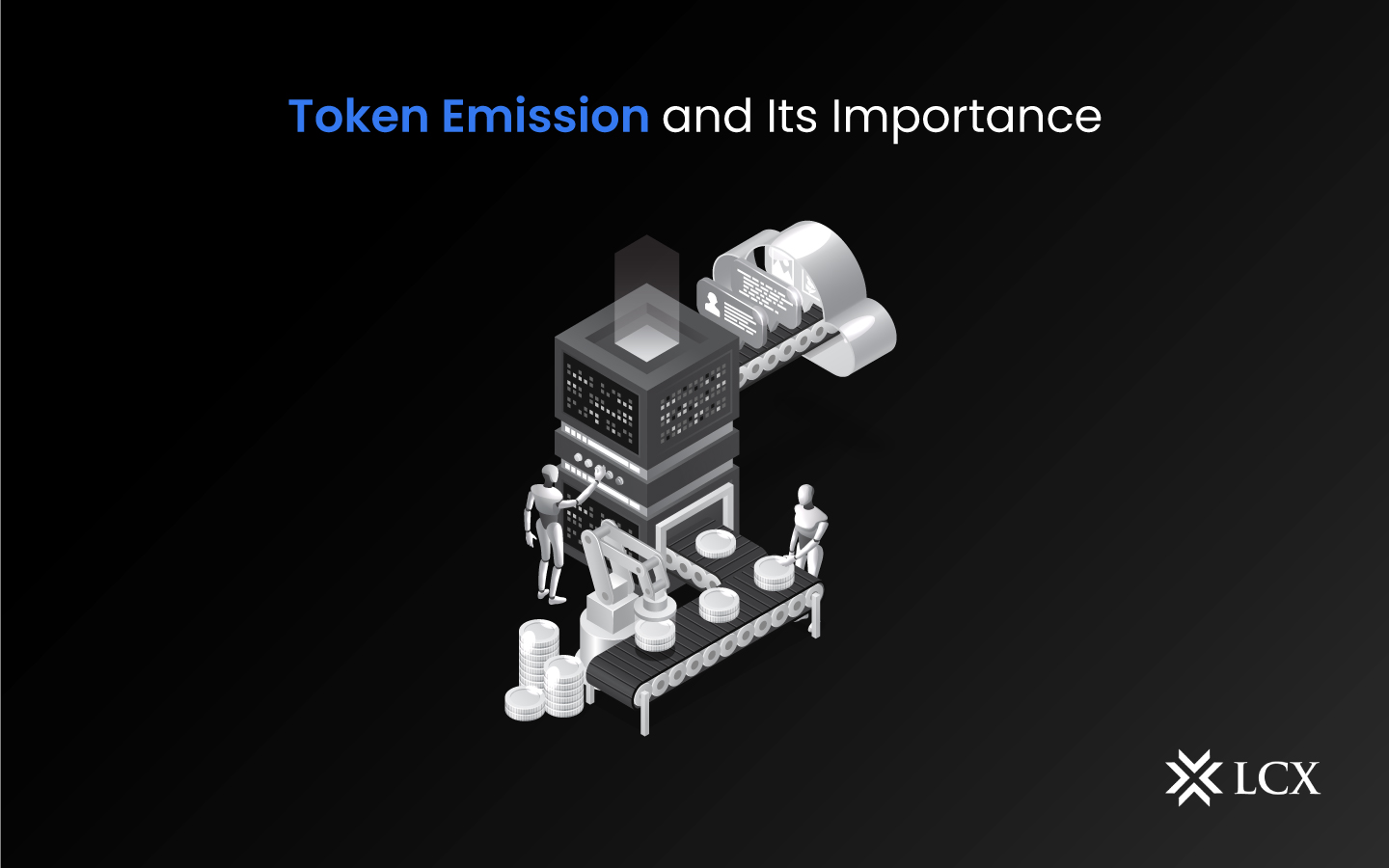In the digitized modern world of blockchain technology, tokens play a crucial and integral role. Tokens have been an essential component of the blockchain-based financial services sector. In addition to providing cryptographic security, tokens simplify access to various financial services. Nonetheless, token emission has become a major focal point in blockchain technology. It refers to the rate at which new tokens are distributed or created on the market. Tokens are an essential component of the blockchain and cryptocurrency ecosystems, and they serve as a valuable medium of exchange in blockchain and cryptocurrency networks. Tokens could represent various entities, such as digital assets, voting rights, and loyalty rewards.
What Are Token Emissions?
Token emissions are a process by which new tokens are created and released into circulation. This process can occur in several ways, including mining, staking, and airdrops. Mining is the process of solving complex mathematical problems to create new tokens. Staking involves holding tokens in a wallet and earning rewards for validating transactions. Airdrops are free distributions of tokens to holders of a particular cryptocurrency.
Token emissions are essential because they help regulate the supply and demand of cryptocurrency. When new tokens are emitted into circulation, it increases the supply of the cryptocurrency, which can lead to a decrease in its market value. Conversely, when fewer tokens are emitted, it can lead to an increase in the market value of the cryptocurrency.
The importance of token emissions lies in the fact that they play a critical role in determining the value and stability of a cryptocurrency. This is because the total supply of tokens in circulation affects the supply and demand dynamics of the market, which in turn affects the token’s price.
In addition, token emissions can also impact the governance and decision-making processes of a cryptocurrency network. For example, if a large percentage of the token supply is controlled by a small group of individuals, they may be able to exert significant influence over the network’s direction and decision-making process. On the other hand, if token emissions are distributed more widely, it can lead to a more decentralized and democratic governance structure.
Important Factors Underlying Token Emissions

- Token supply: The total supply of tokens is one of the most crucial factors to consider when evaluating a blockchain project. Token supply is closely related to token emissions, as the circulating supply identifies the number of tokens that have been released onto the selected network. Alternatively, the total supply of tokens also affects the token emissions of a blockchain project. The total supply of tokens represents the maximum number of coins or tokens that a project will ever issue during its lifetime. It is essential to note that the token emission rate of a blockchain or cryptocurrency project can vary based on the total token supply. Will the supply of the blockchain initiative be fixed? Bitcoin, for instance, has a supply cap of 21 million BTC. Alternatively, certain cryptocurrencies, such as stablecoins, do not have a total supply cap. The information about the total supply and circulating supply of tokens can provide investors with insight into the inflation of the projects.
- Token distribution: The description of a blockchain or cryptocurrency project’s tokenomics model would also emphasize the significance of token distribution. In fact, the answers to the question “What is token emission?” are closely related to the goals of token distribution. Token distribution illustrates how a project’s tokens have been distributed to investors. ICOs and airdrops are two of the most popular methods for token distribution.
- Token utility: The significance of token emissions in a new blockchain project’s token economy also draws attention to token utility. For a token to be successful, it needs to be used for some value-based activities within the cryptocurrency domain. Among the most instructive examples of token utility is the ETH token of the Ethereum blockchain. It can be used for staking as well as paying gas or transaction fees on the Ethereum network.
- Burning mechanism: The burning mechanism is another crucial aspect of a blockchain project’s tokenomics. Token burning helps stabilize token emissions and can increase the desirability of a token. Many projects routinely burn tokens to increase their desirability. The term ‘burning’ implies that tokens are eliminated from circulation permanently. The Auto-Burn mechanism helps determine the number of tokens to be burned based on their price and the number of blocks that have been generated. The Ethereum London Hard Fork is another instance of a combustion mechanism. The London Hard Fork, which was introduced in 2021, provides a detailed explanation of token emission in relation to the combustion of transaction fees. A decrease in the circulating supply of ETH will convert the token into a deflationary asset over time.
- Governance: For initiatives that utilize tokens for governance, token emissions are a significant concern. The decentralization of crypto and blockchain initiatives suggests that governance is a crucial factor in their tokenomics. There are various governance tokens available, which allow their proprietors to exercise voting rights and influence future decisions. A thorough examination of the token emission schedule for governance tokens could help determine how a project intends to democratize its decision-making authority.
Conclusion
Token emissions are a critical aspect of the cryptocurrency ecosystem. They play a significant role in determining the value and stability of a cryptocurrency network, as well as its governance and decision-making process. As the cryptocurrency industry continues to evolve and mature, it is likely that we will see new approaches and mechanisms for token emissions that will shape the future of this exciting and rapidly evolving field.









